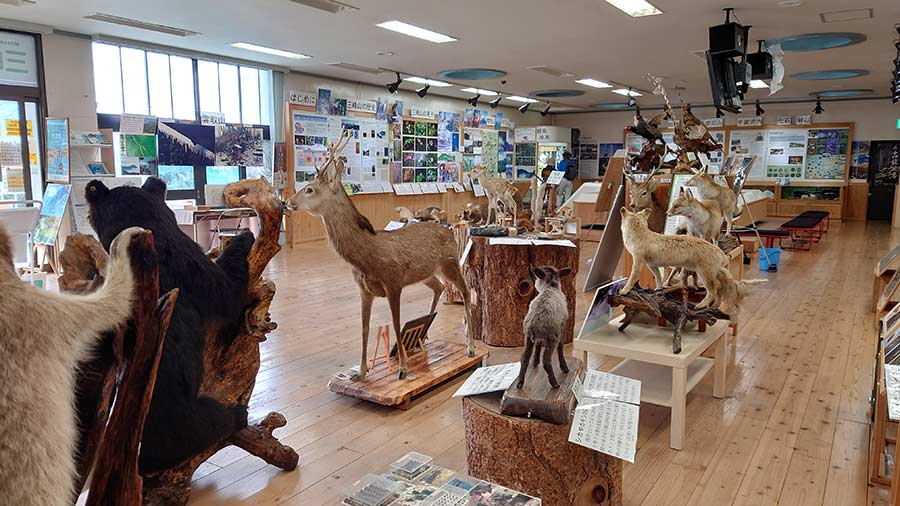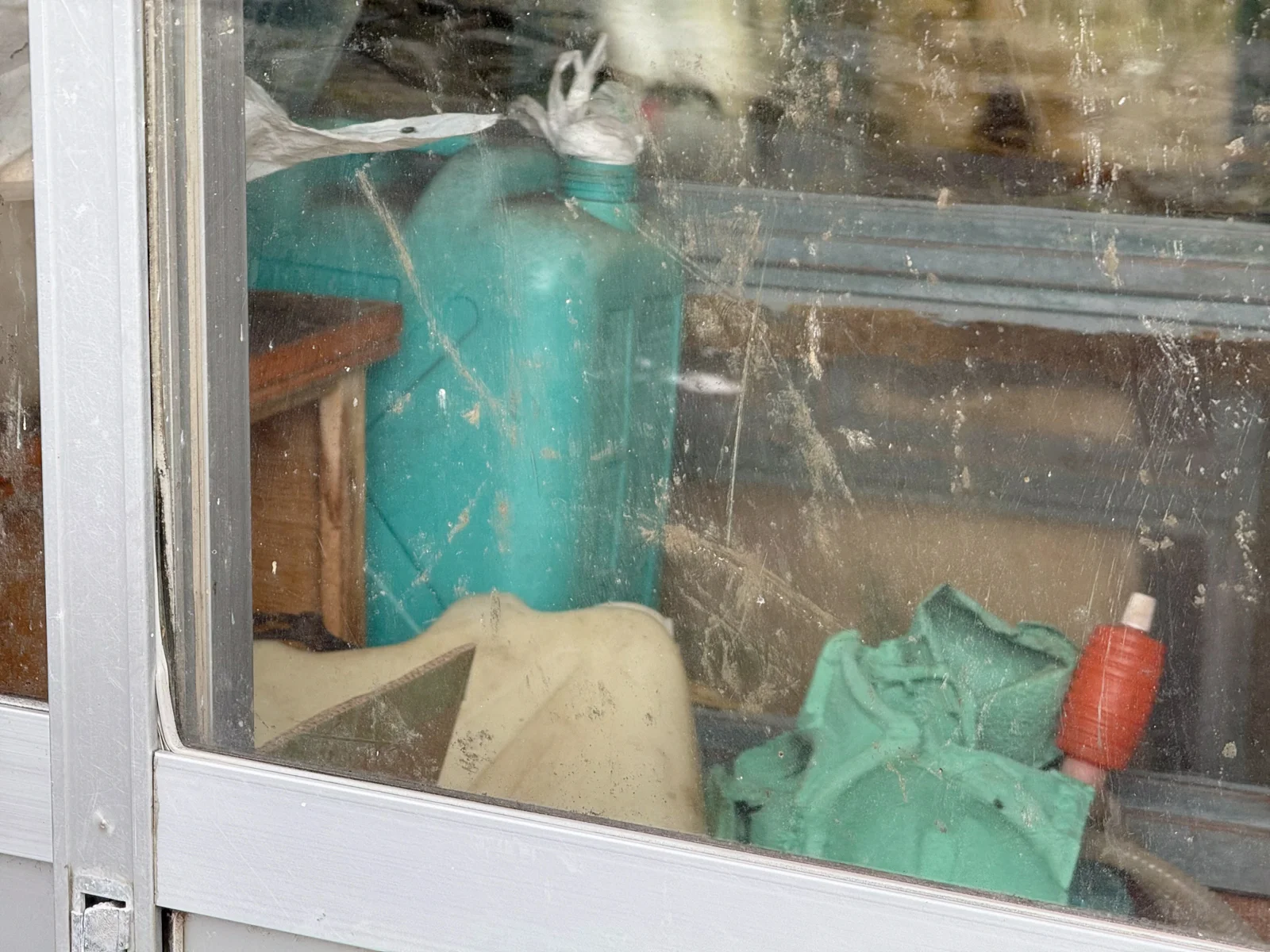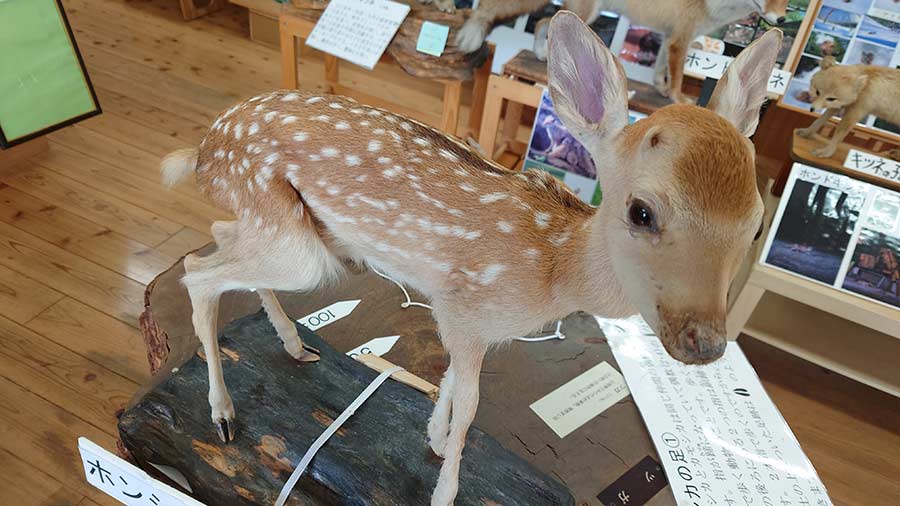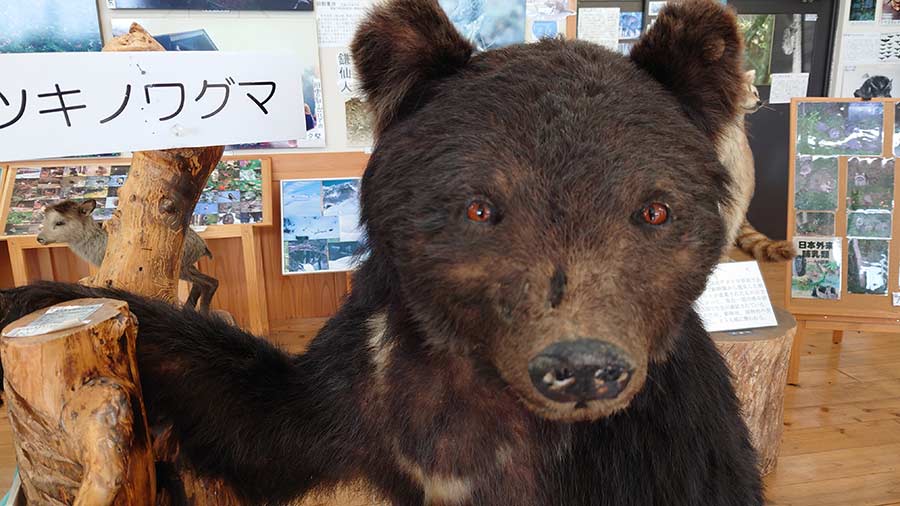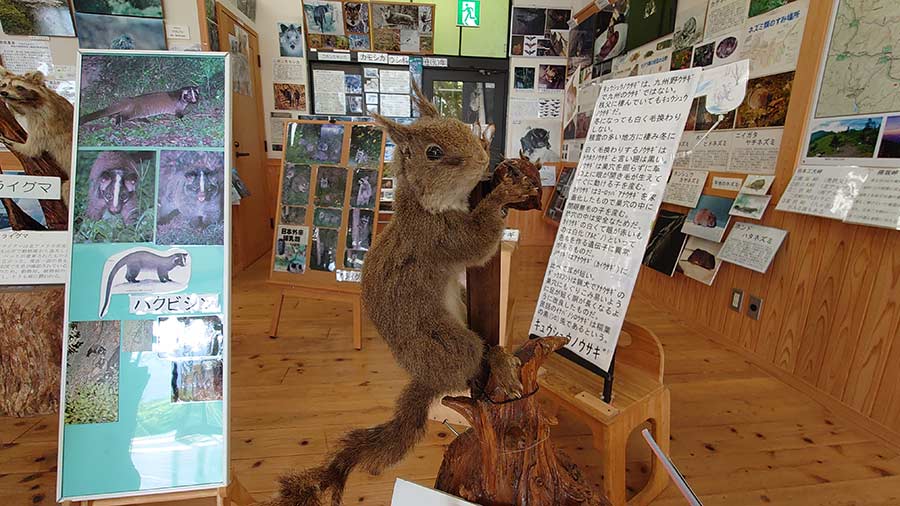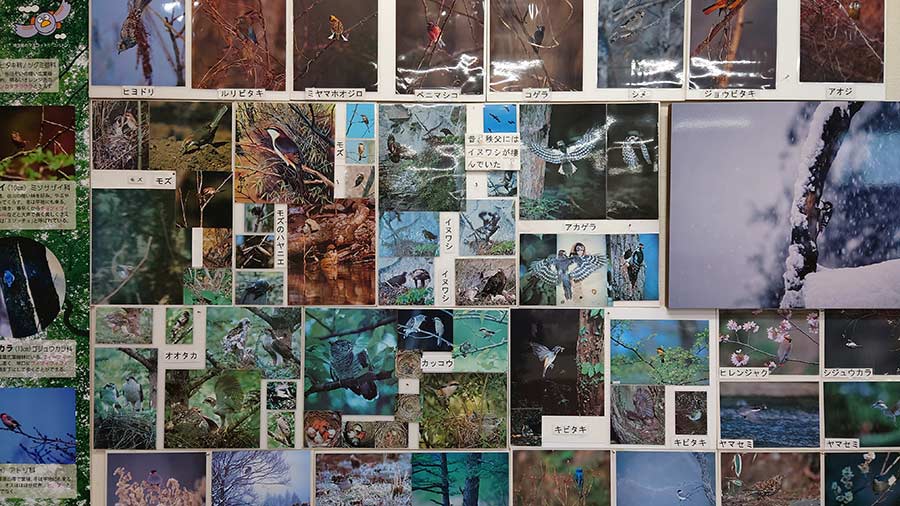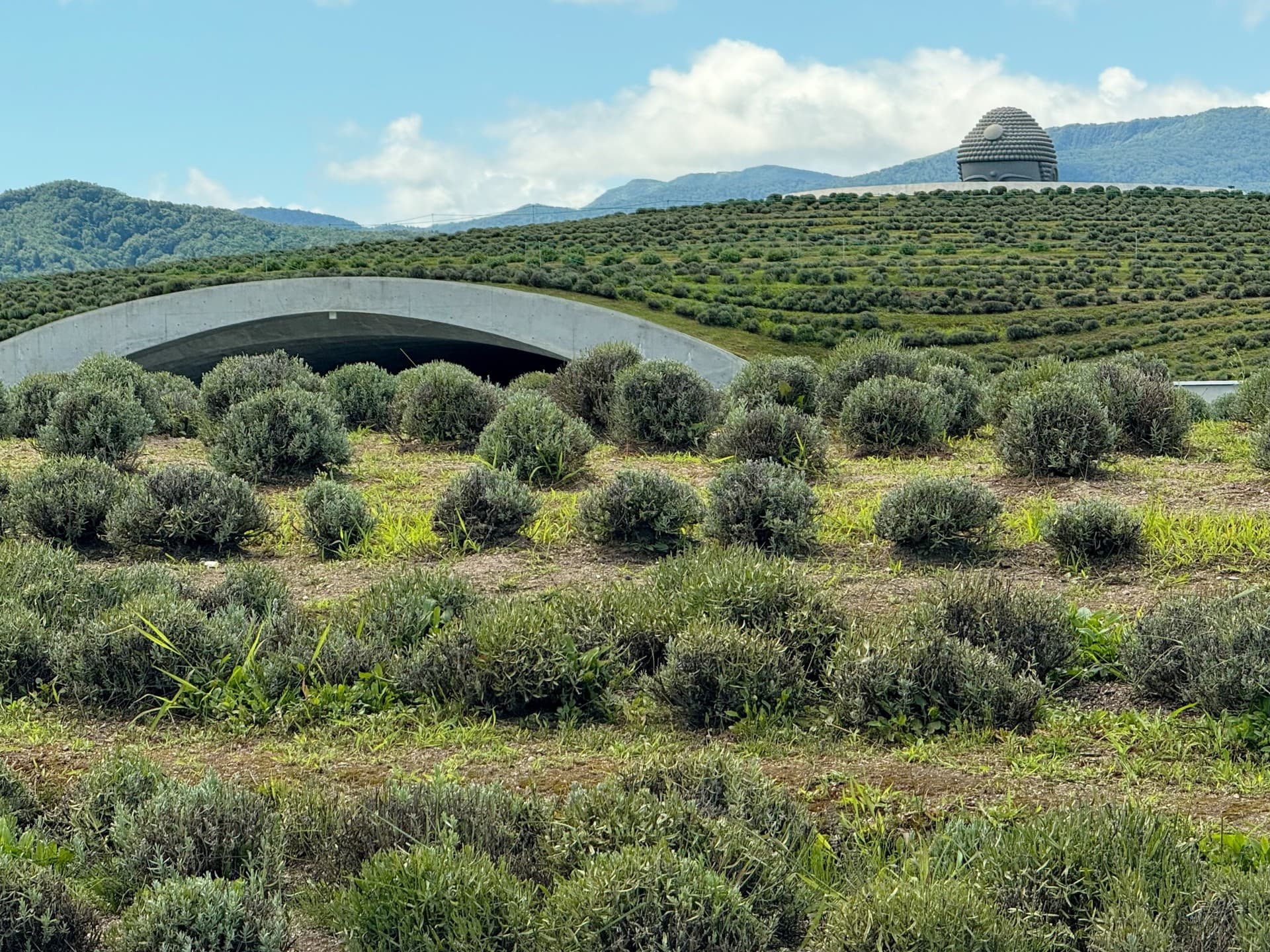Mitsumine Shrine: a mountaintop sanctuary with a deep connection to wolves
In the mountainous Chichibu area of Saitama Prefecture, there is a spectacular shrine dedicated to wolves.
Mitsumine Shrine, located in the green mountains of Chichibu at the elevation of 1,100 meters, can be reached in three ways. One way that will obviously take a long time is by hiking via the main road or the various hiking paths through the mountains. Bonus points of bravery if you do this in hot, sweaty and humid Japanese summer. The second way, for all of you who own a private helicopter, you could try flying close to the top (yes, there’s a heliport not too far away). The third way that most of us will pick is by a car or a bus, as long as you don’t have motion sickness — the uphill road is super steep, full of zigzag turns, and will take about an hour and a half from Seibu-Chichibu Station. It is possible to come here on a day trip from Tokyo.
Once you’ve reached the parking lot near the shrine at the summit of Mount Mitsumine, you will be rewarded with a scenic view that will look fantastic in every season of the year.
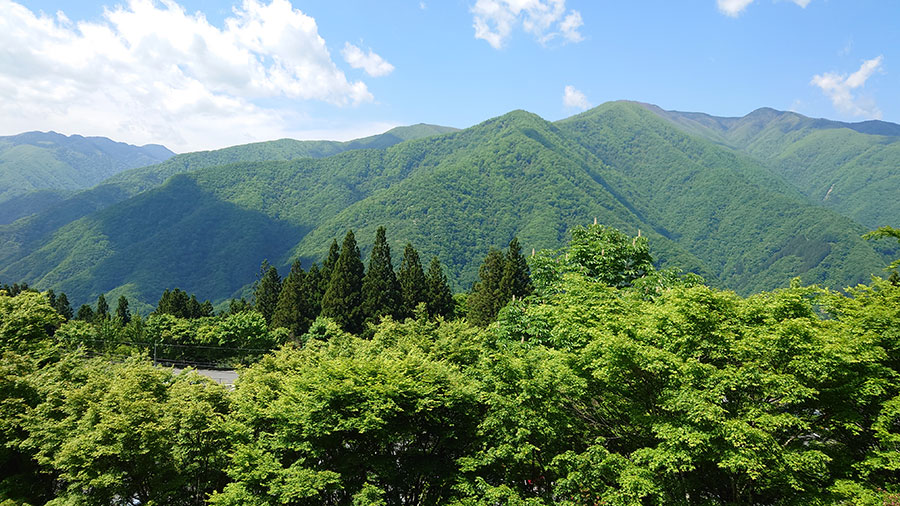
From the parking lot, it will take a bit of walking to actually reach the shrine, starting with a rather unusual entrance:

Why unusual? Because the torii gate has a design that is quite rare — it’s a so-called “three torii gate” with a large torii in the center and two smaller partial torii connected on both sides, everything painted in white. It is said that there are only seven such combined gates in Japan. Sitting on the left and right are two guardian wolves (more on those later on).
After a short walk through the gate, there will be an intersection leading to three different points of interest. The stone stairs on the right lead to an observation point — a gazebo called Yohaiden offering a stunning view of the surrounding forest and mountains. The Yohaiden is meant for worshipping the far away shrine that is located on the opposite mountain called Mount Myohogadake.

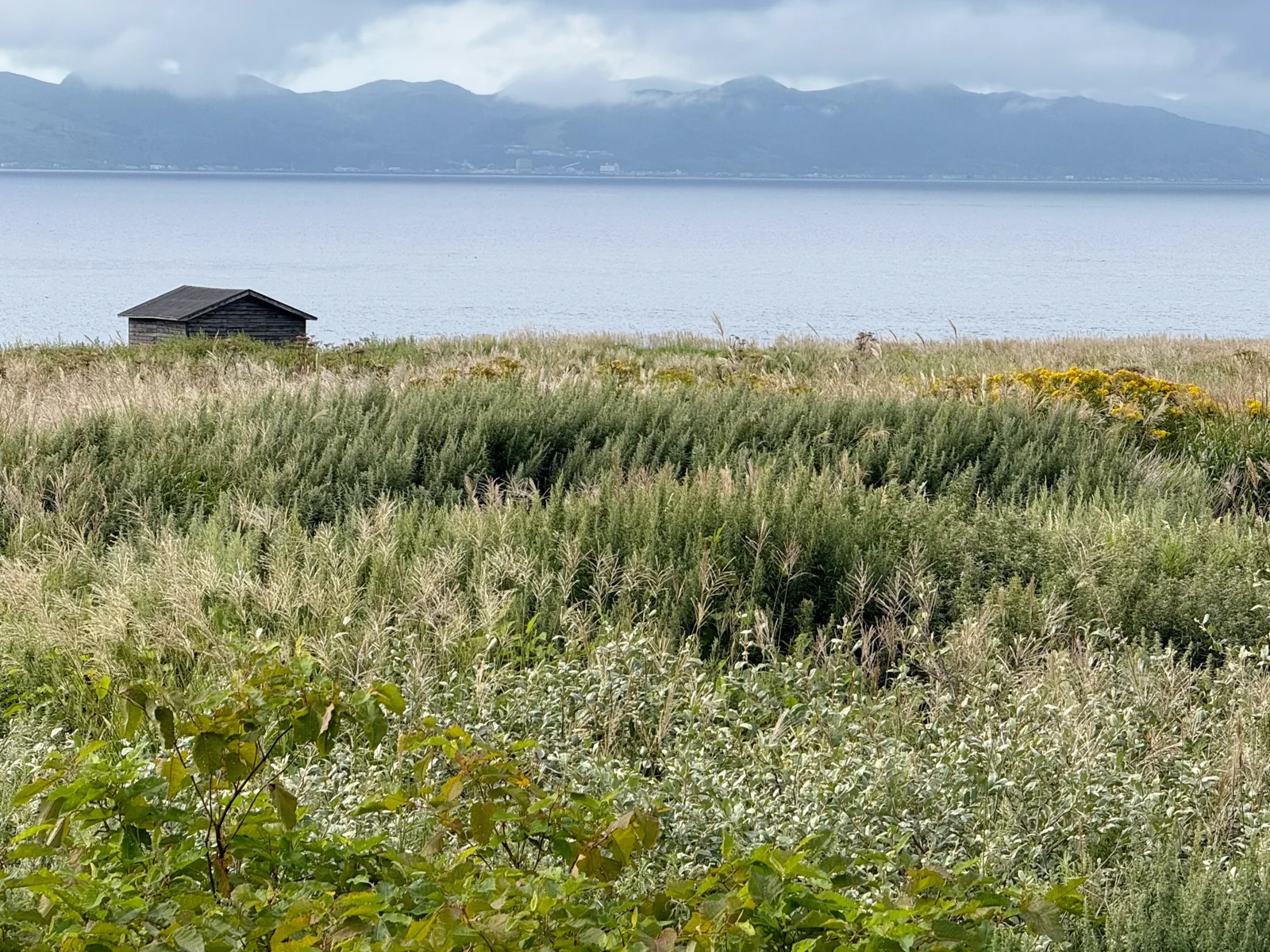
From here, if you are lucky and the weather conditions are just right, you might even be able to observe a sea of clouds below you (apparently, this is the only location in Chichibu that offers that kind of view).

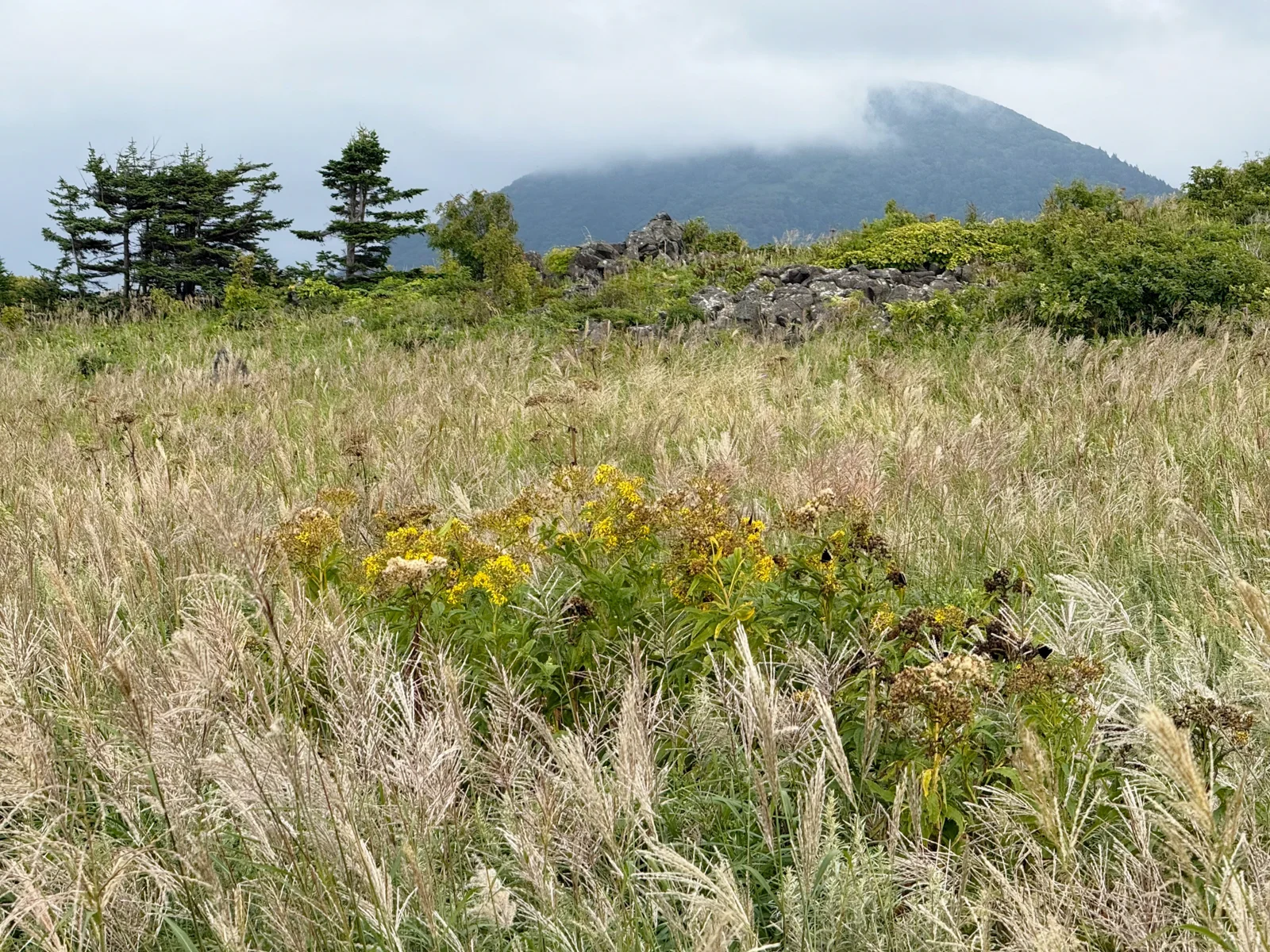
There is a hiking trail and if you walk on it for just a minute or so, you will find a small shrine built right into the hill. Just watch your step (if you roll down this hill, they probably won’t find you easily).

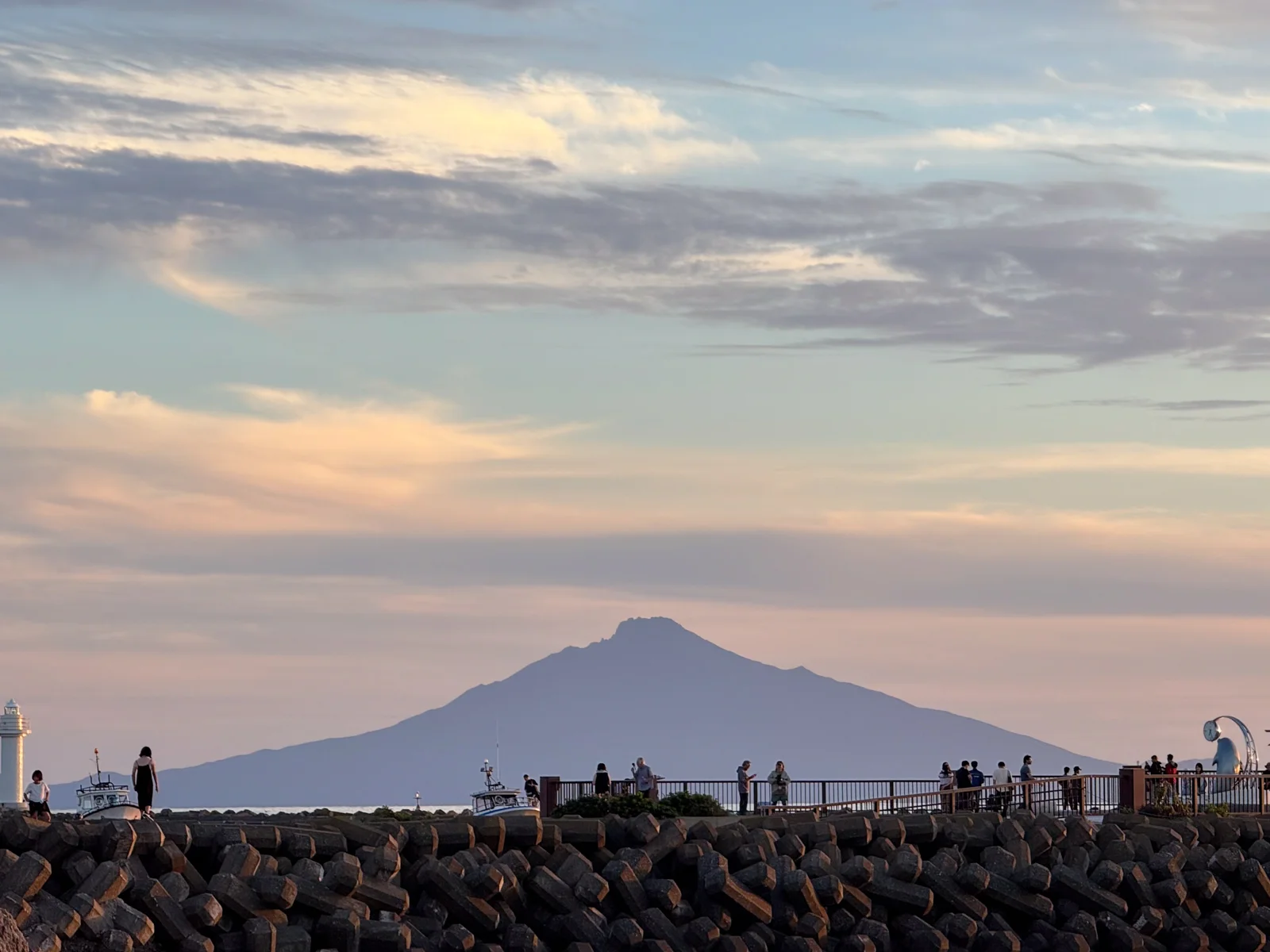
Next to the observatory you might notice this a bit intimidating statue of a wolf lurking in the woods. But fear not!
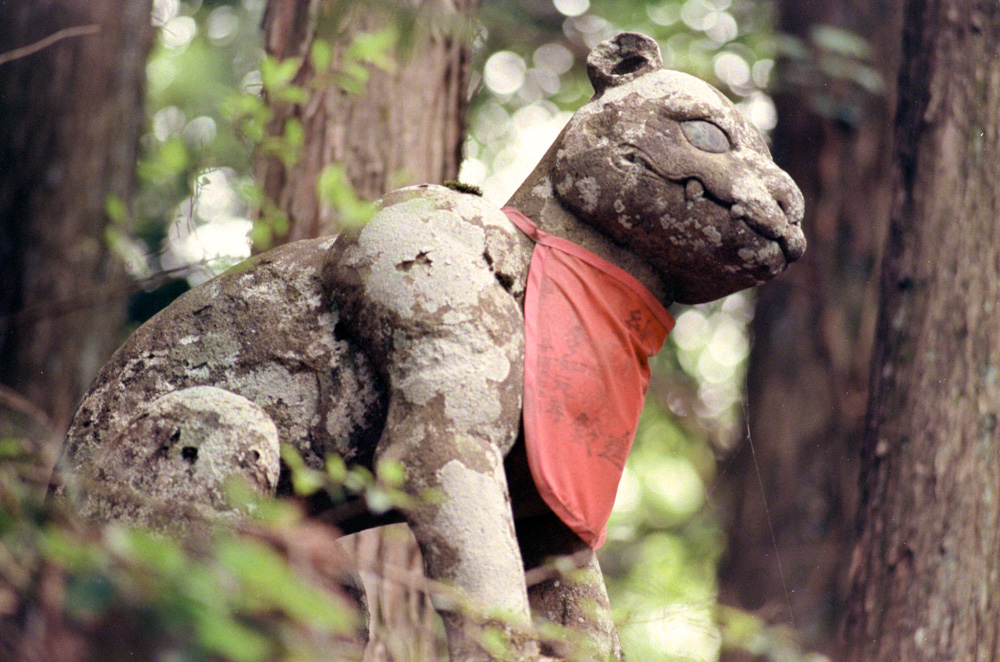
The reason why you will see many wolf statues around this place is because Mitsumine Shrine is dedicated to Japanese mountain wolves, among other gods. The spirits of these wolves — which are now extinct — were once believed to be messengers of gods and protectors against fire and burglars.
Worship of wolves was especially widespread during the time of cholera epidemics in the 1800s, a disease that arrived to Japan via foreign trade. Cholera is a terrifying illness that is spread by ingesting contaminated water and food. Infected people die with severe suffering from sudden dehydration. As such, it instilled a lot of fear in population.
Cholera, a new and unknown disease at the time, was called korori which sounded similar to cholera and was used to describe somebody suddenly collapsing and dying. The word was written with Kanji as 狐狼狸 — the three characters meaning fox, wolf and racoon, the animals associated with the supernatural. People believed that wolves, the natural enemy of foxes and racoons, would ward off the disease. Shrine records from the 19th century show that many places from the city of Edo, as well as towns along the Tokaido route, sought protection from cholera by displaying wolf talismans from Mitsumine Shrine. There was a sharp rise of people visiting the shrine in 1858, and thousands of talismans were acquired that year (on December 15th alone, 13,000 talismans were issued at the shrine).
Back at the intersection, if you follow the path straight ahead up a small hill, you will see someone standing in the distance, raising his arm.
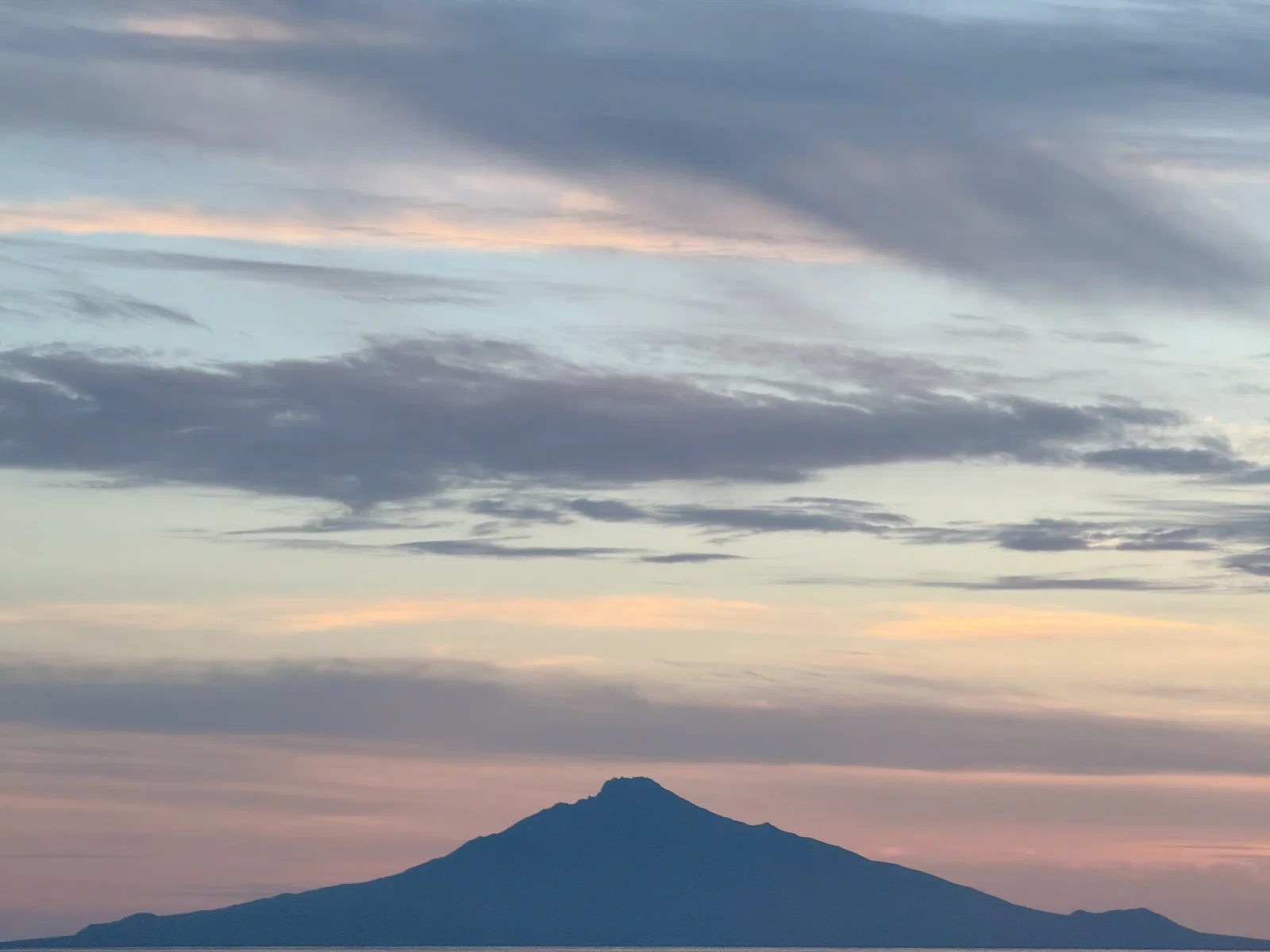
Let’s get closer!

It’s a 5.2 meters tall statue of Yamato Takeru, the mythical founder of Mitsumine Shrine. Yamato Takeru was a prince, the son of an emperor in the 2nd century who was sent on warrior missions, conquering territories and at the same time founding numerous Shinto shrines. It is believed that when he arrived to this area, he lost his way in the fog and followed a white wolf that suddenly appeared in front of him, helping him guide out of the forest. In gratitude, the prince founded the shrine here some 1900 years ago.
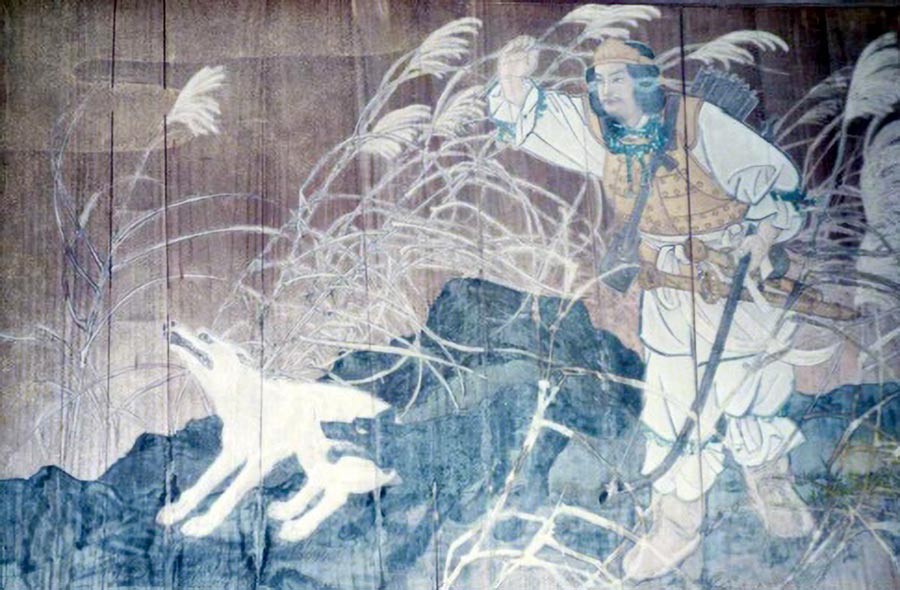
From that time on, wolves became known as messengers of gods. Many shrines were built and dedicated to wolves.
Looking at the statue, you can’t help but notice his unusually large hand, for reasons which are unknown. Maybe it’s to show his strength? He was a warrior, after all.
If you feel going on a little side quest, not far from the statue you will find a memorial of the legendary Kyokushin karate master Masutatsu Oyama, who lived and trained at this mountain. He founded Kyokushin Kaikan, the international karate organization, in 1964.

It is now time to head towards the main building, following the path lined with lanterns and passing through the large, magnificent gate called Zuijinmon, which has been standing here since 1691.

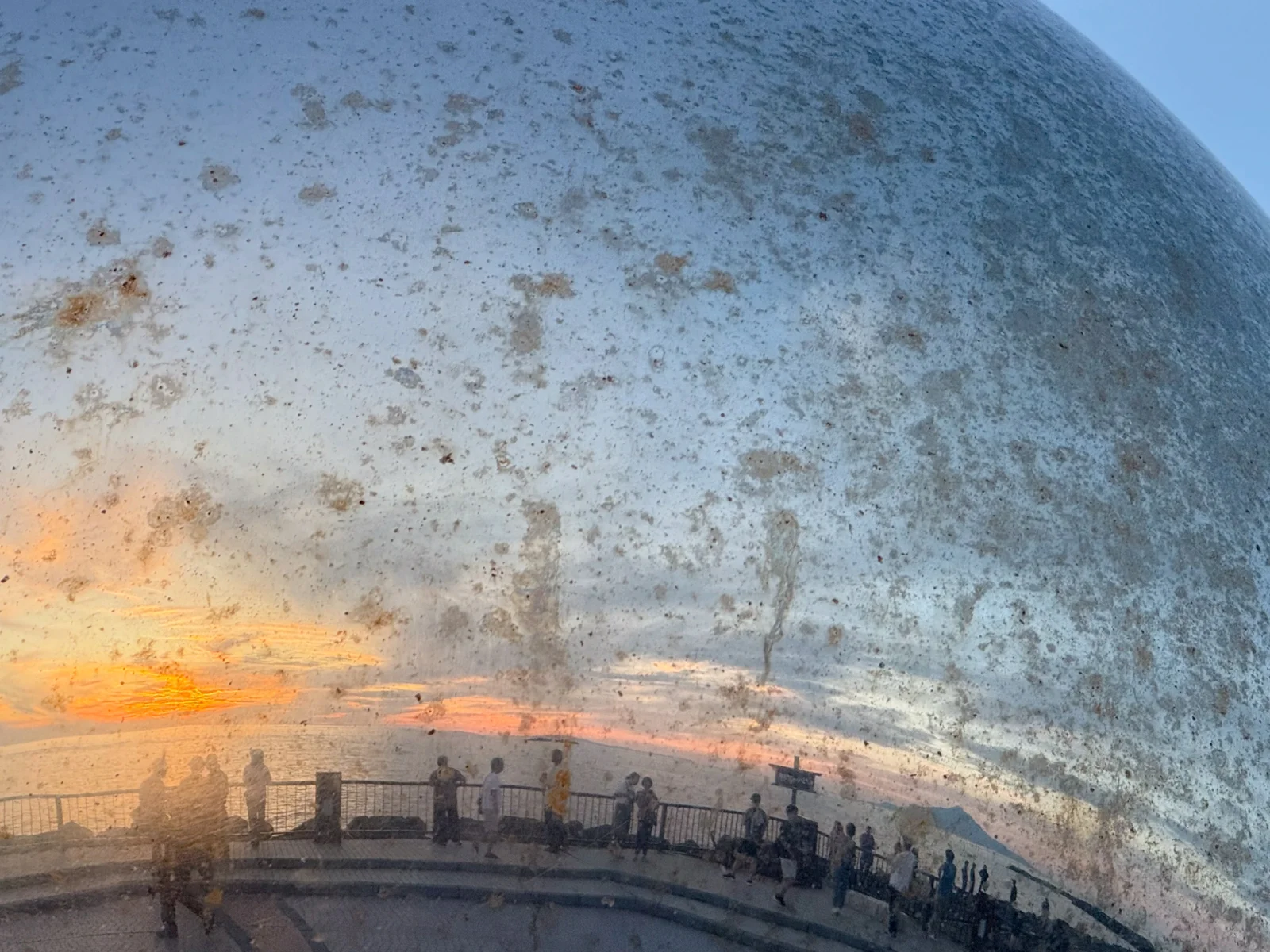
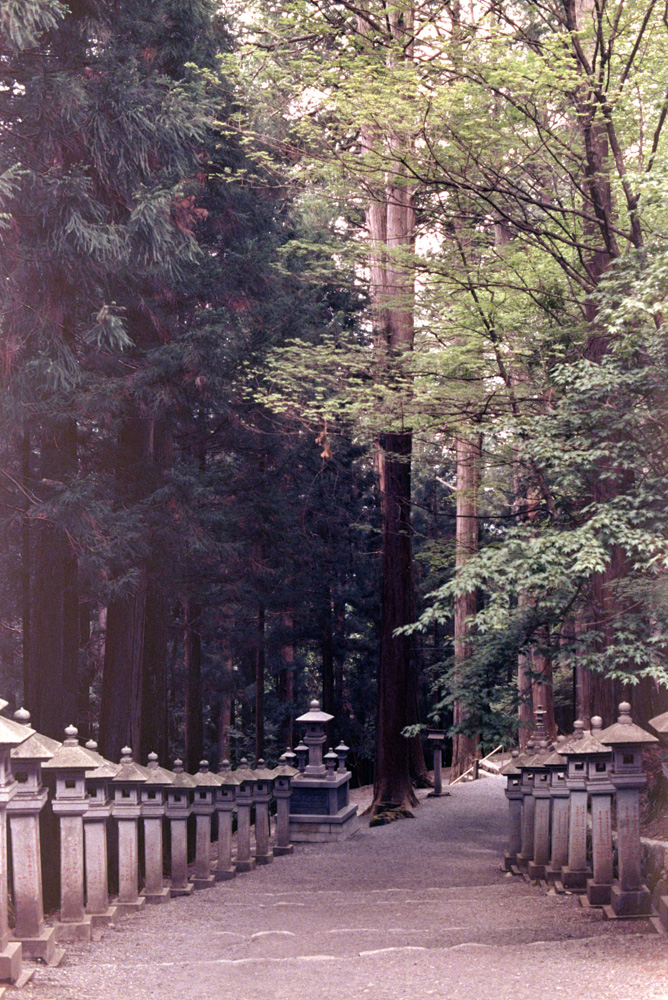
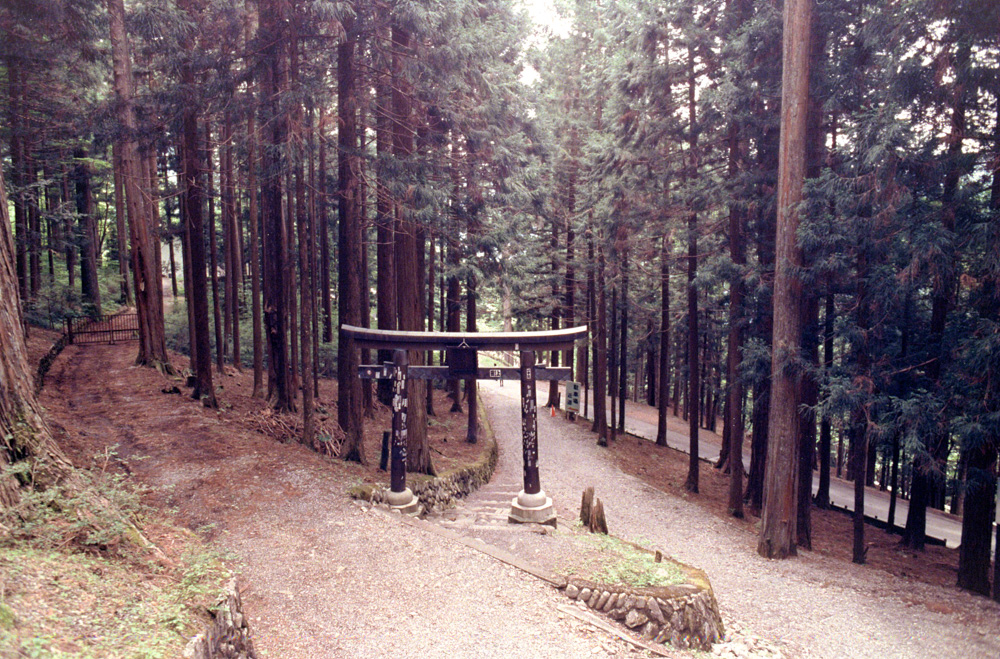

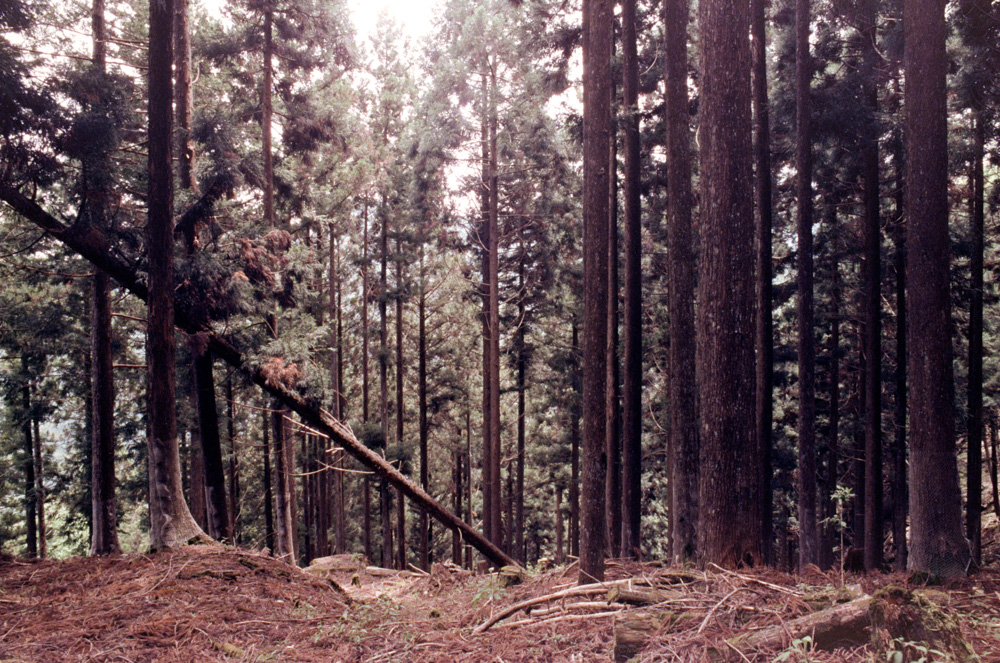
You will be surrounded with ancient cedars, some bifurcated like this one below.

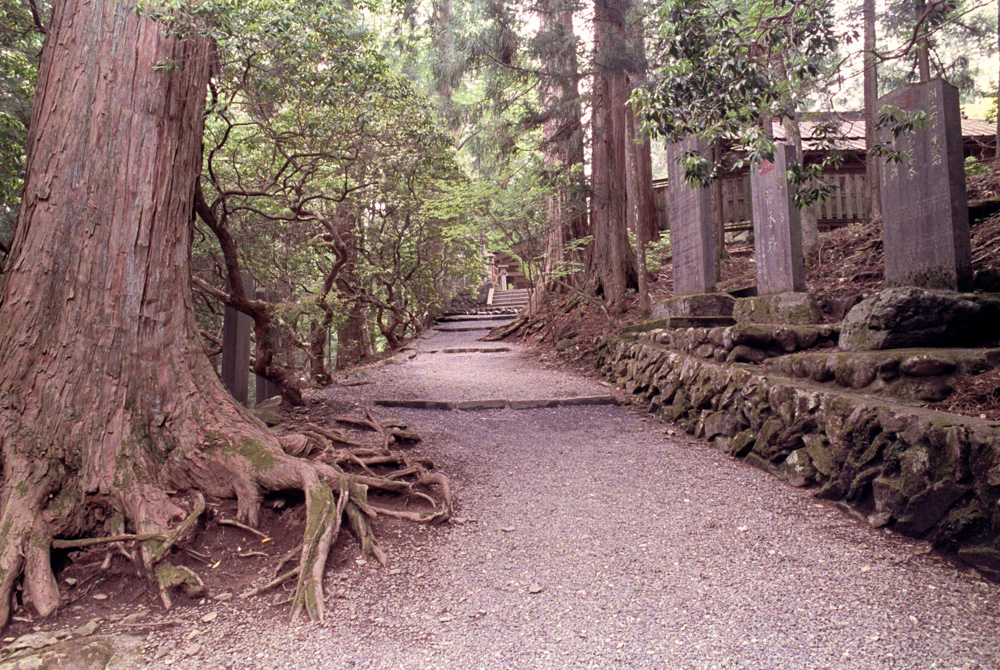
Along the way, you will encounter many large tombstones.

Shortly, you will reach the stone stairs to the main worship hall, with two black wolves on both sides.
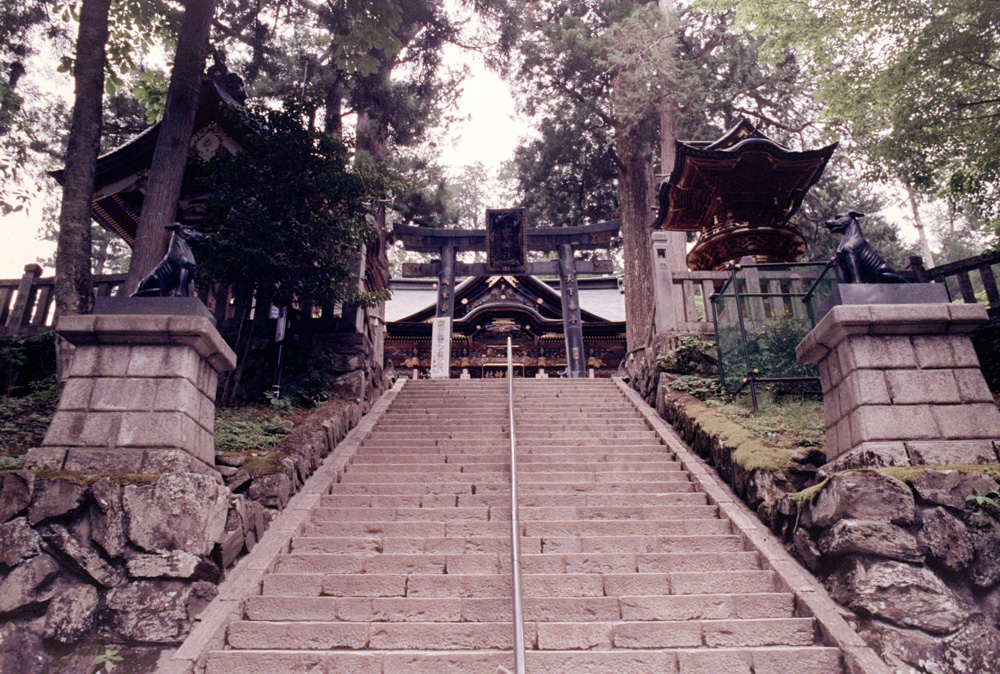
You might wonder why stairs at shrines in Japan often have a railing in the center. That is because you shouldn’t walk in the middle but on the sides. The middle is reserved for the gods. Same with the torii gate — you are not meant to pass through right in the middle (that is also the reason why sometimes you will see a small wooden fence placed in the middle of a torii gate).
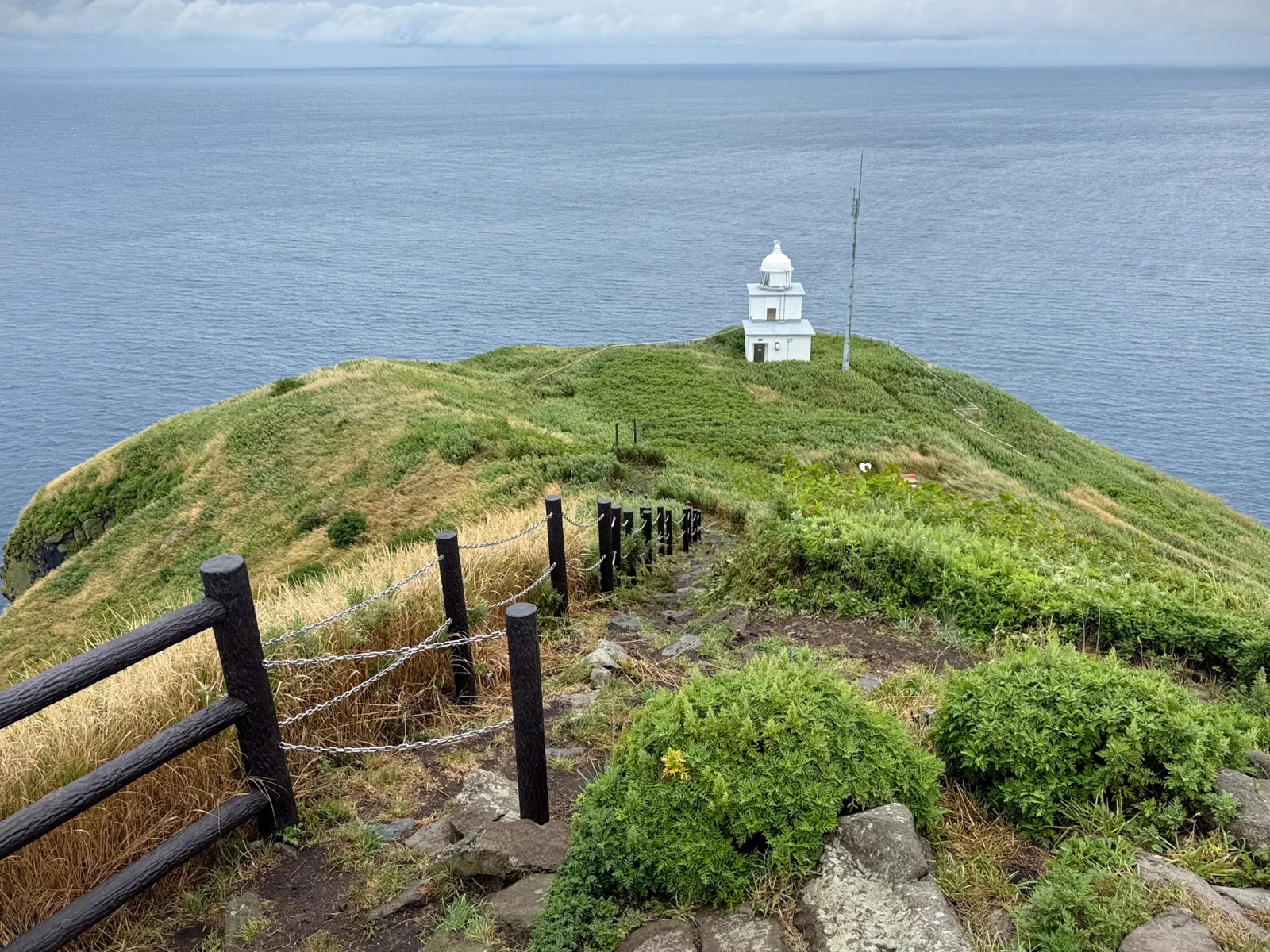
Just up the stairs, you will be greeted with the most iconic view of the Mitsumine Shrine — the intricately carved main building with cedar trees at the front on both sides. The building was constructed over 200 years ago. It is dedicated to Izanagi-no-Mikoto and Izanami-no-Mikoto, the mythical deities said to have given birth to the country of Japan. People visit this place to pray for prosperity in business, fulfillment of wishes and good fortune.

There are over a hundred species of flowers and trees of Chichibu drawn on the ceiling inside the main building.

The two sacred trees with the shimenawa (the rope) around them are called shigetadasugi and are estimated to be 800 years old. Many people line up in front of them. It is said that if you take three breaths and pray facing the tree with your hands leaning on the trunk, its positive energy will flow through your body.
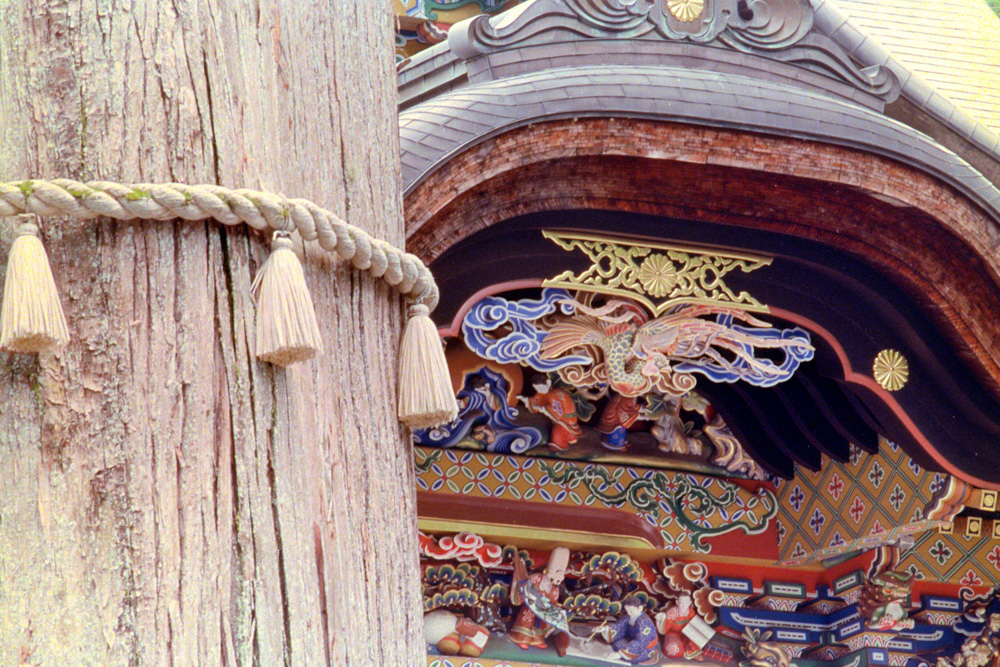
At the time of this writing, as part of coronavirus measures, there is a platform placed in front of the trees, with a fence to prevent touching the surface of the trees, and people pray from a close distance.
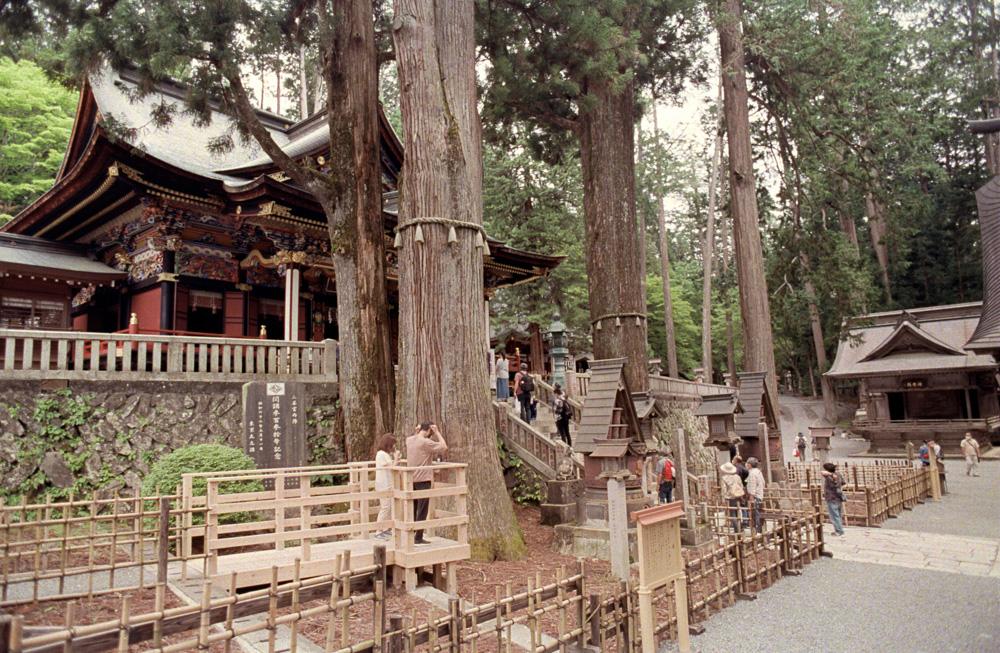
Looking at the trunk, it’s easy to notice how the color and texture have changed from hundreds of years of touches.

Adjacent to the trees, there are two oldest known statues of a wolf in Chichibu, dating from 1810.

The chozuya (water pavilion) in front of the main building also has some incredibly detailed and colorful carvings!
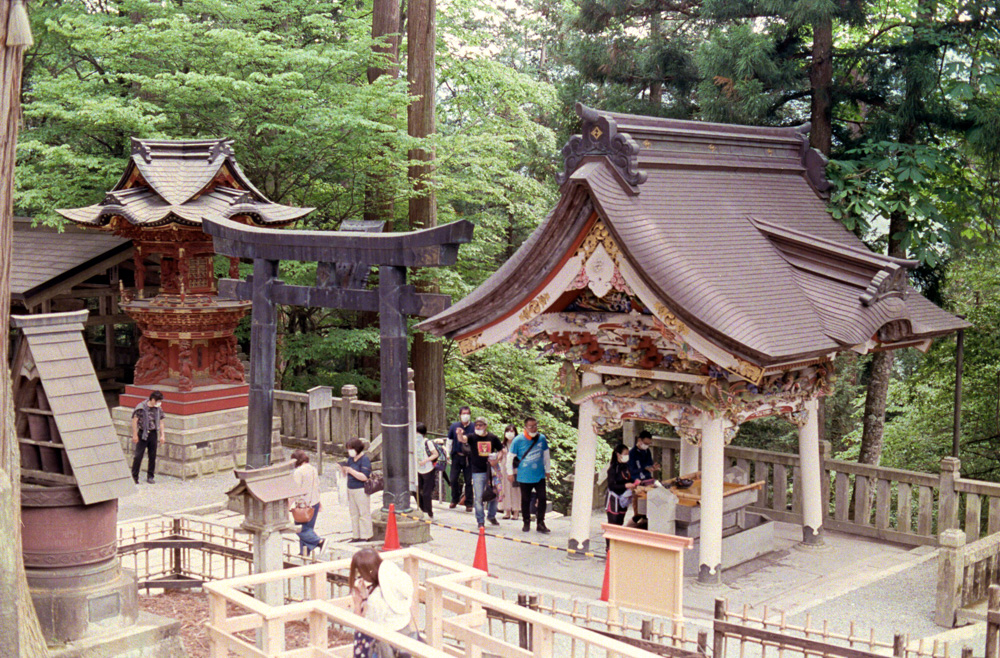
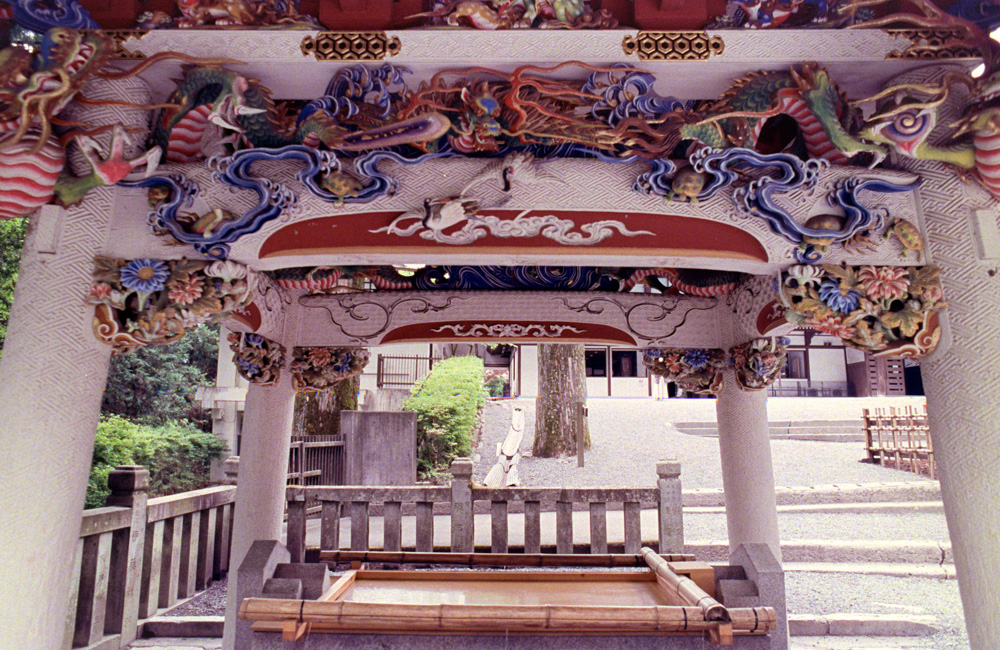
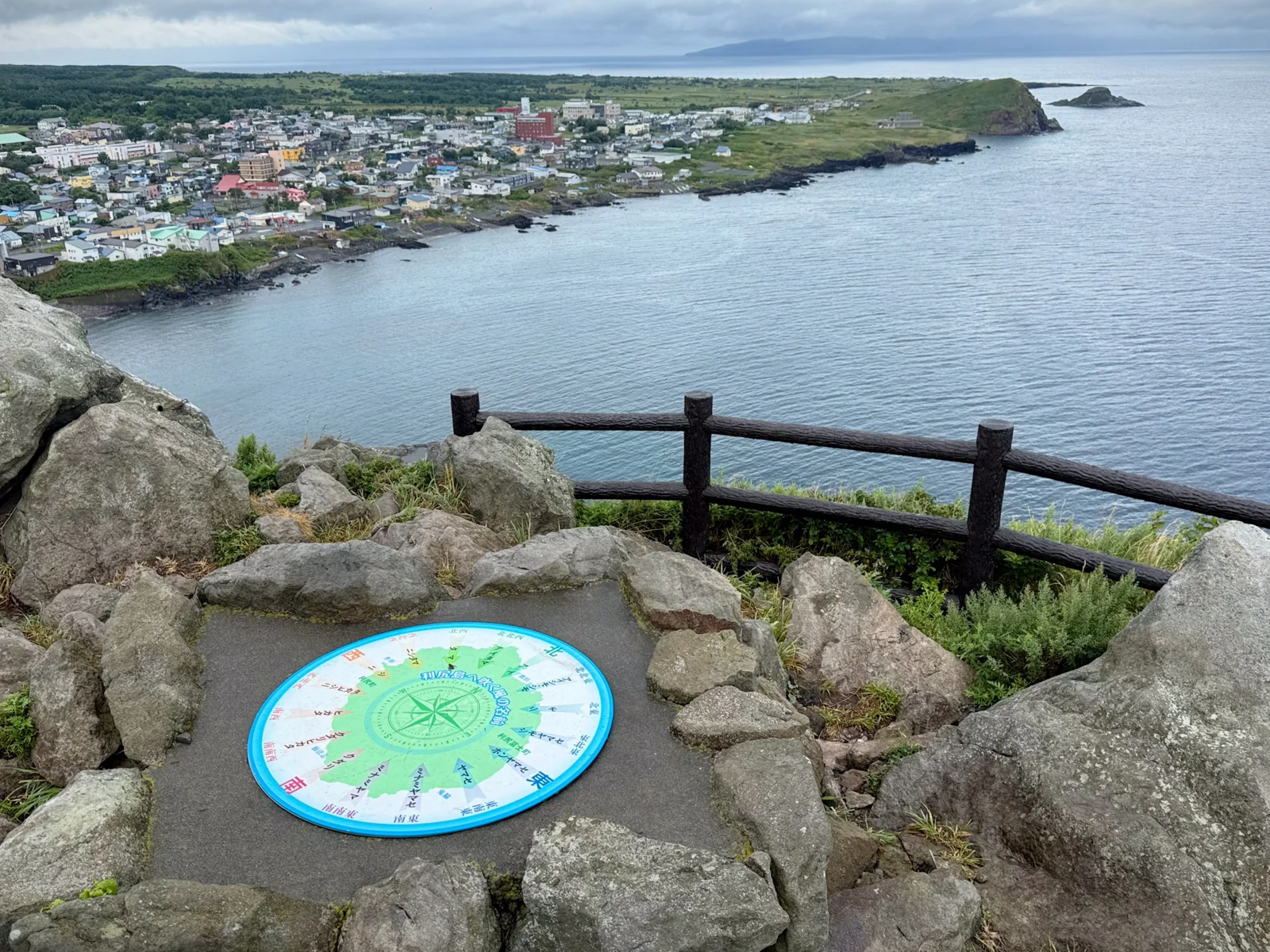

There are a few other buildings in this area, some of them older than the main building itself.

Among them is a building where Noh theater performances are held.
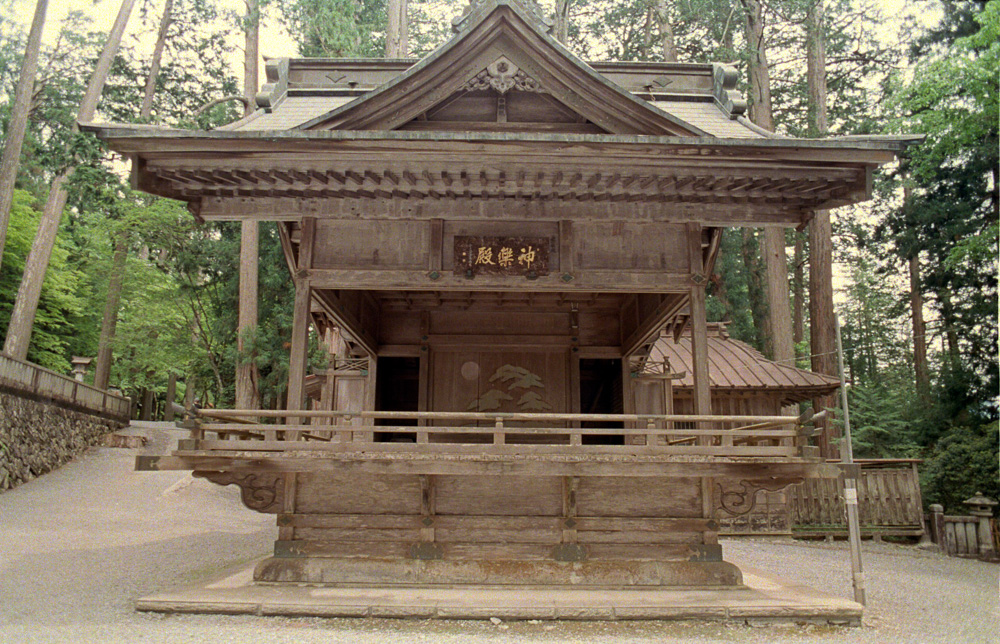
Up the path behind it, you will find a row of several small shrines, dedicated to gods from various shrines of Japan.
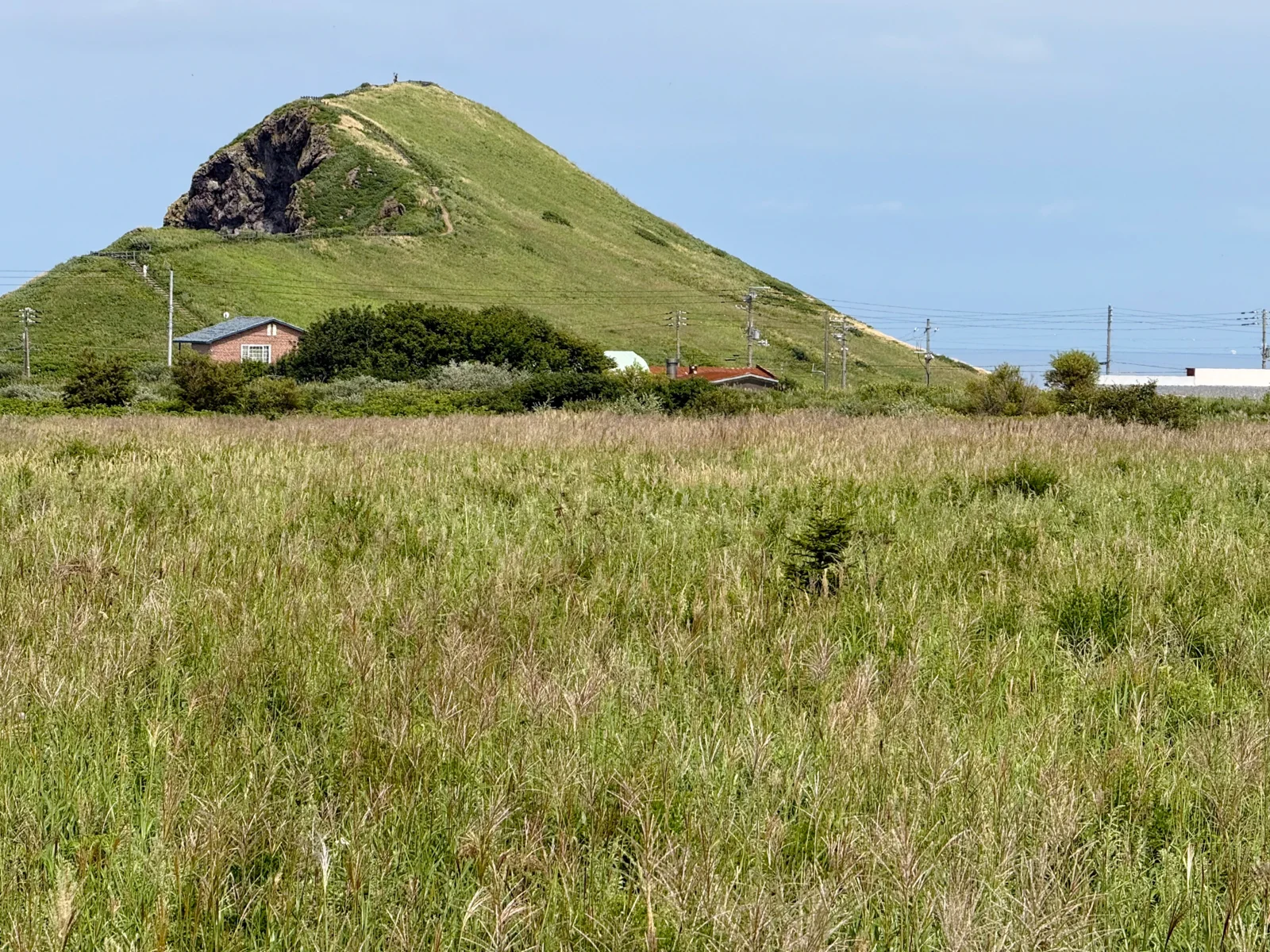

Make sure to keep an eye on any new wolf statues you find — there are plenty of them on the precincts!
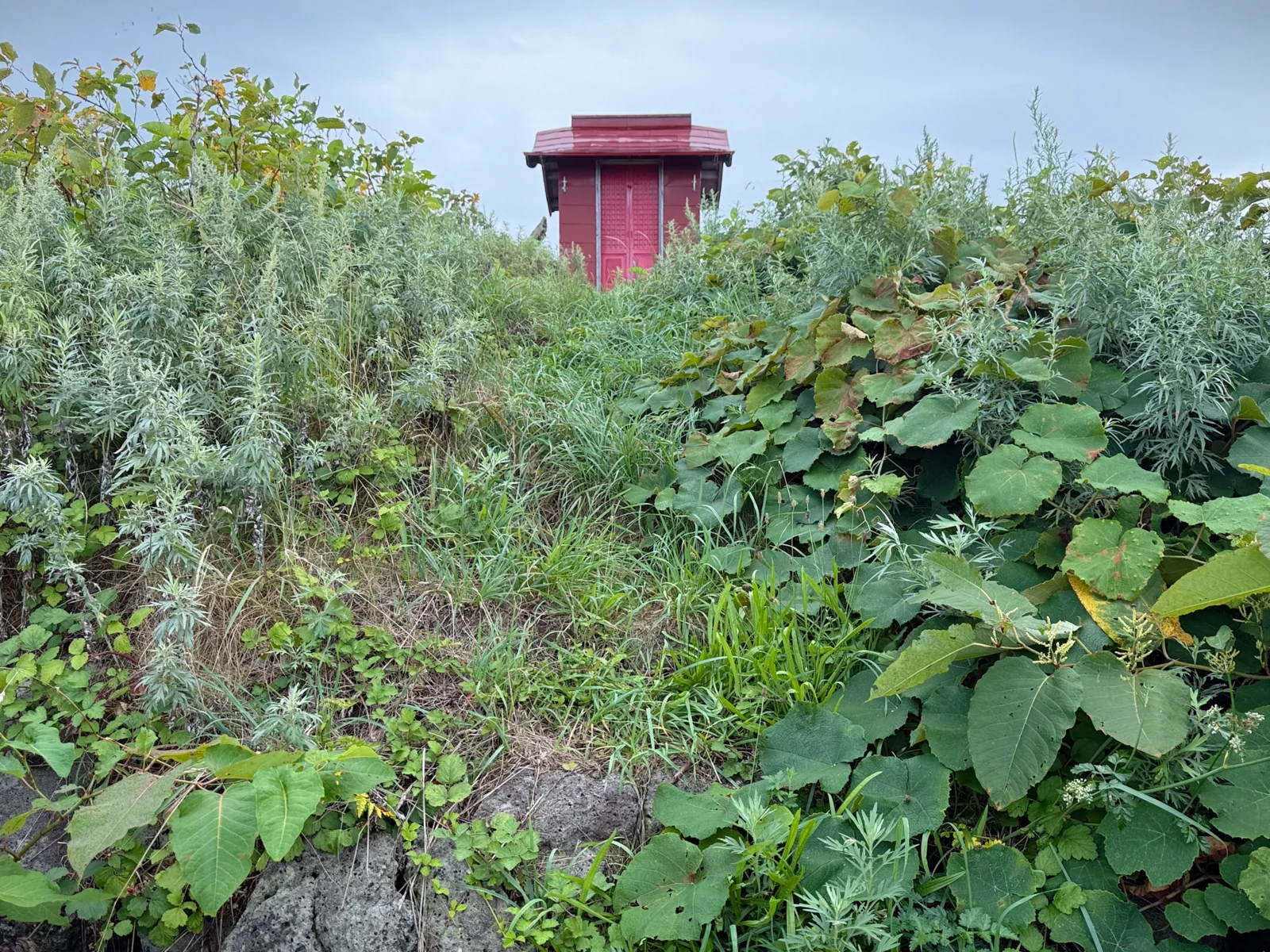
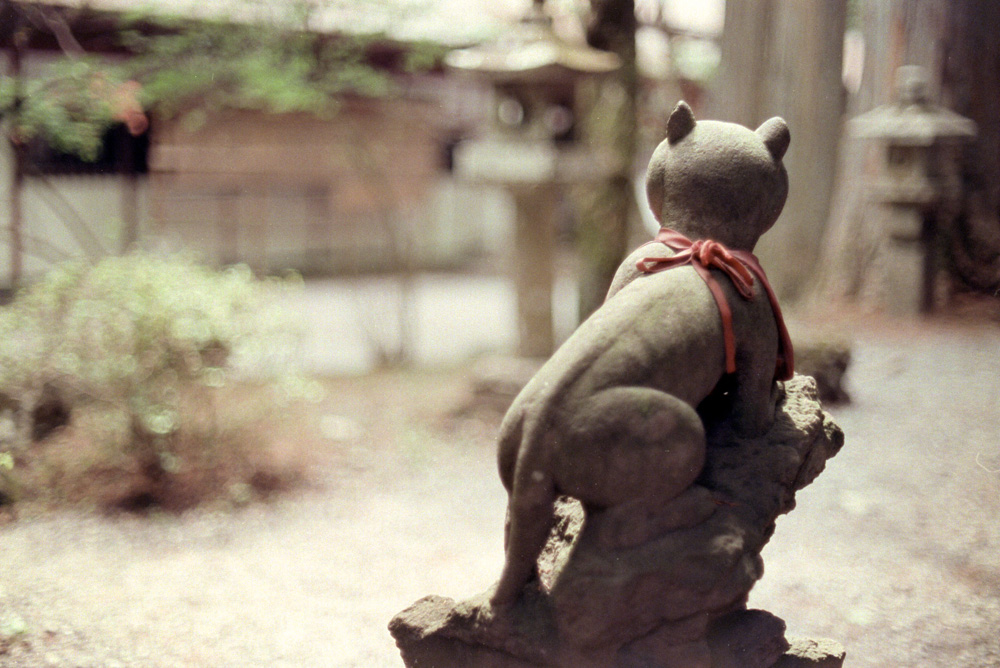
Remember the karate master we mentioned before? One of the shrines is dedicated to him, and during the annual training camp of the Kyokushin Kaikan, the members pay a visit here and begin training.
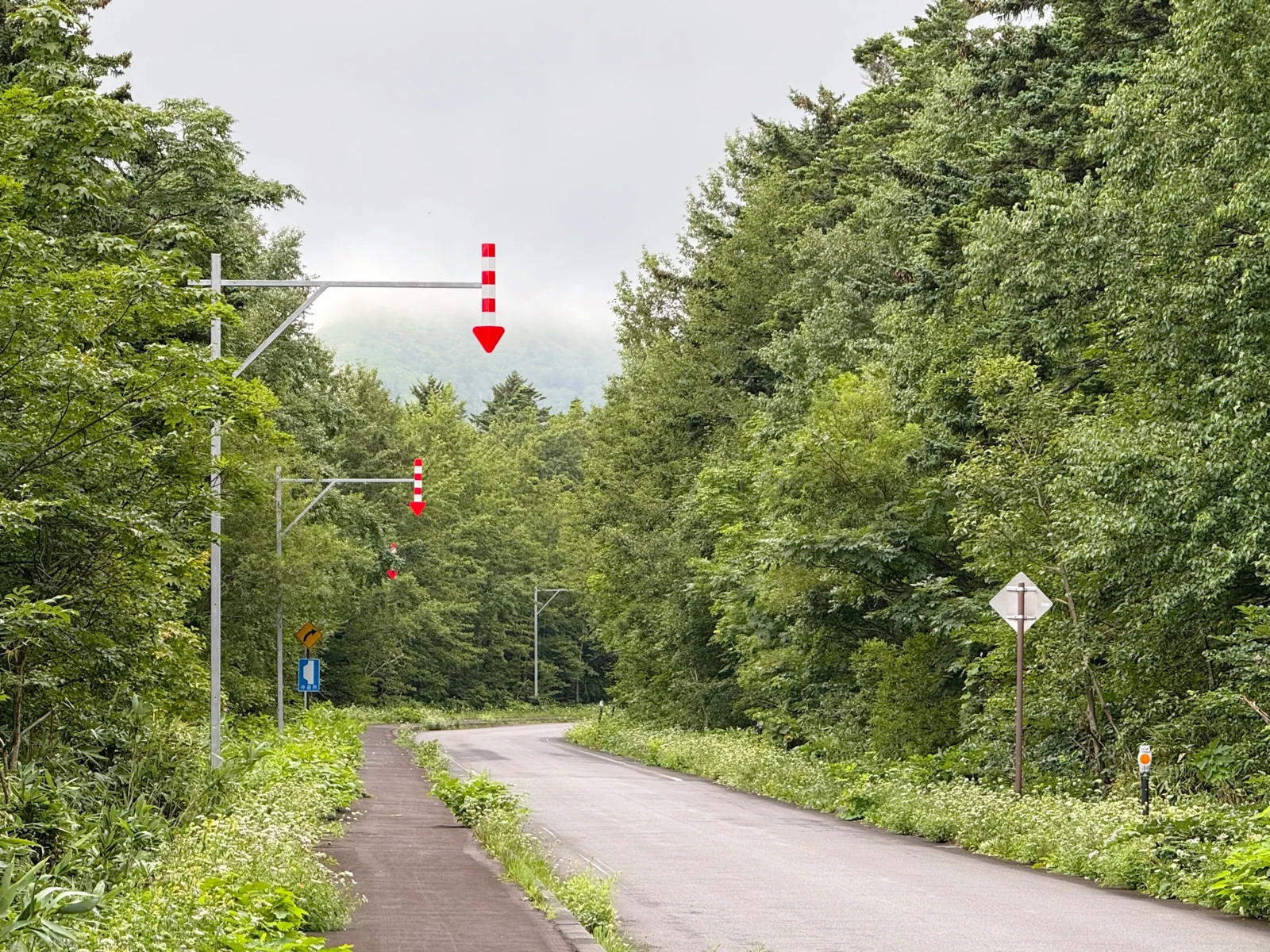
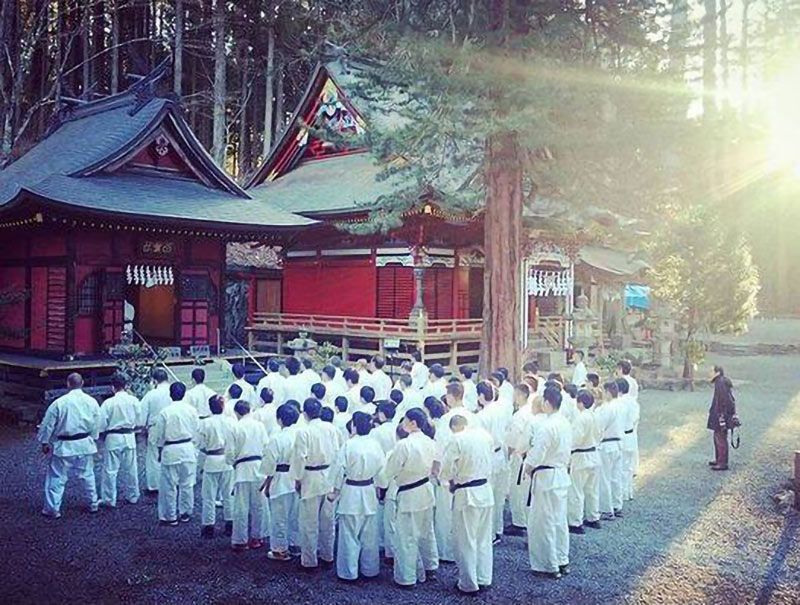
I know that by now you are dying to buy a souvenir from this shrine. And yes, there is a souvenir shop located on the precincts near the main building. Wondering what kind of things they sell? Wolves, of course!
Like these small stuffed ones.

Or some huge stuffed ones (the white one here costs a measly 50,000 yen).
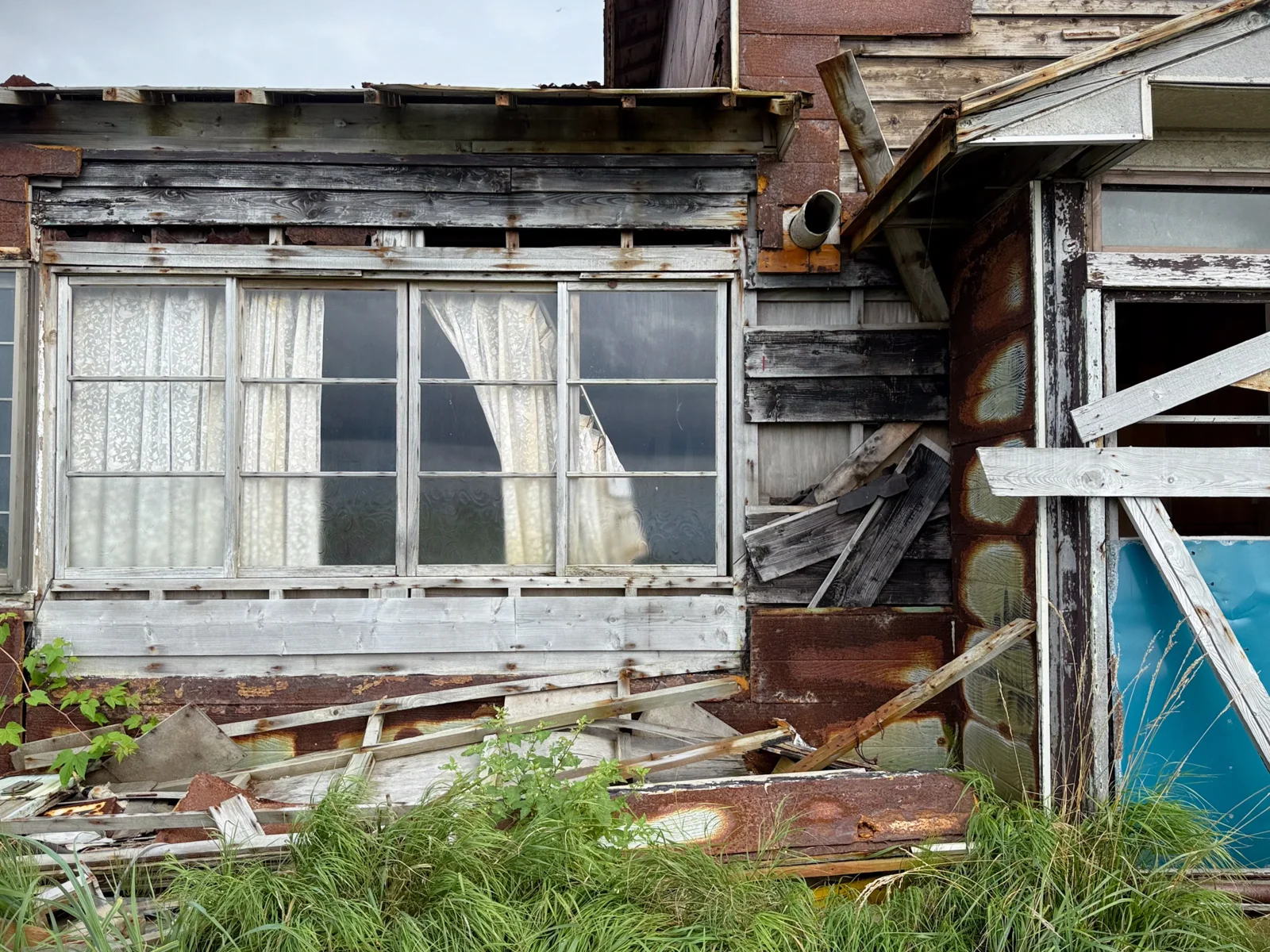
In the mountains, it can be cold in winter, so you will need some wolf-themed socks.
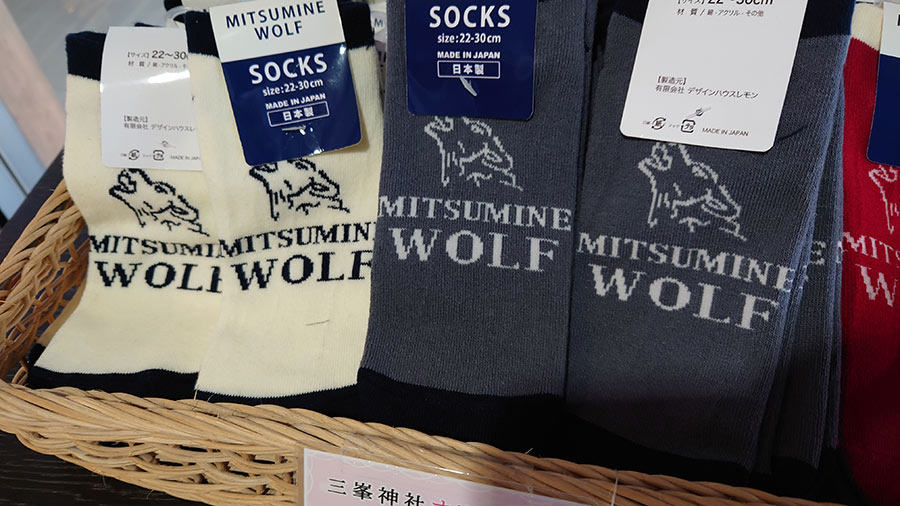
If you are a shrine seal collector, you can buy 3 different goshuincho seal albums at the shrine office. One design in particular that stands out is this embossed one:
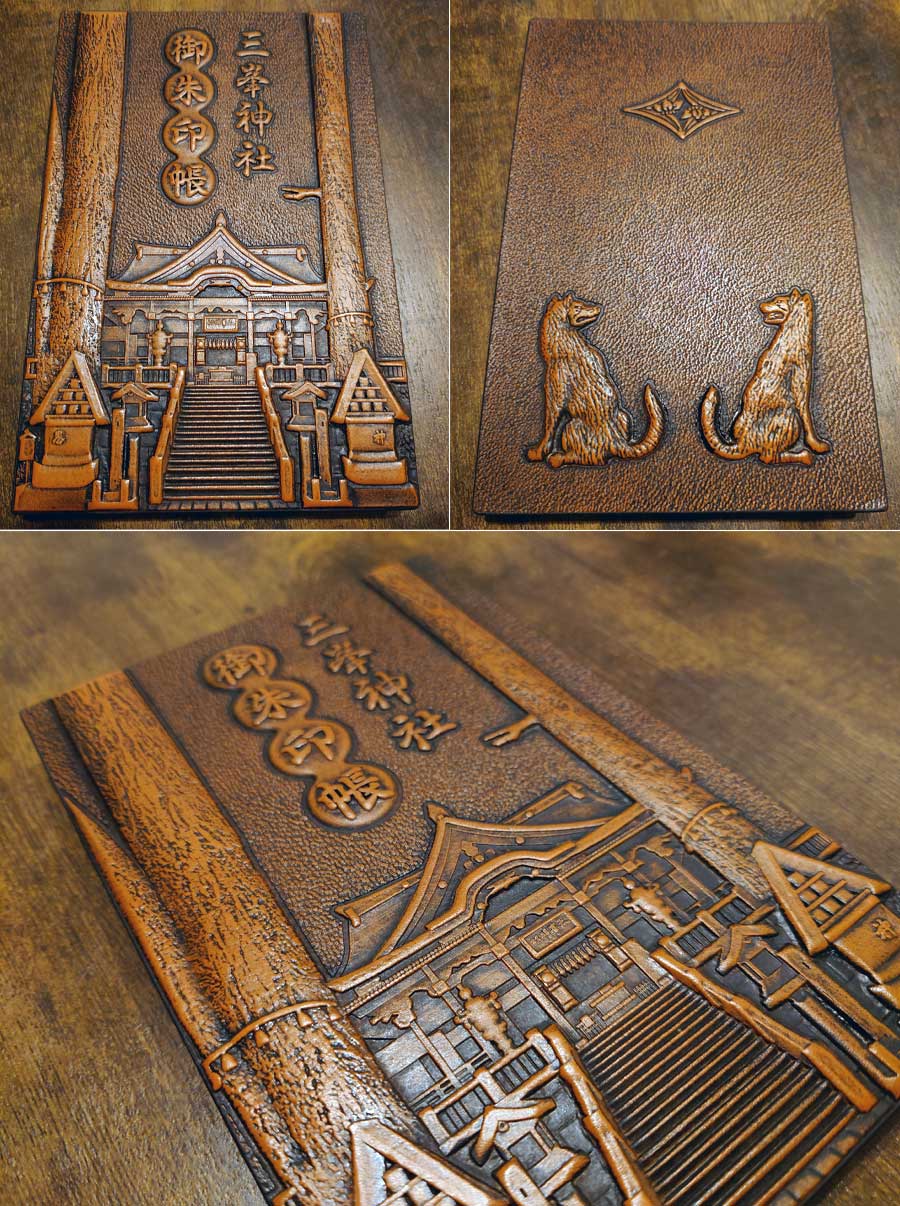
The cover looks like it’s made of wood, but it’s actually really tough paper. Interestingly, it seems to be made by the same company that created the seal album for the Daiyuzan Saijoji Temple.
The goshuin seal of Mitsumine Shrine looks like this:
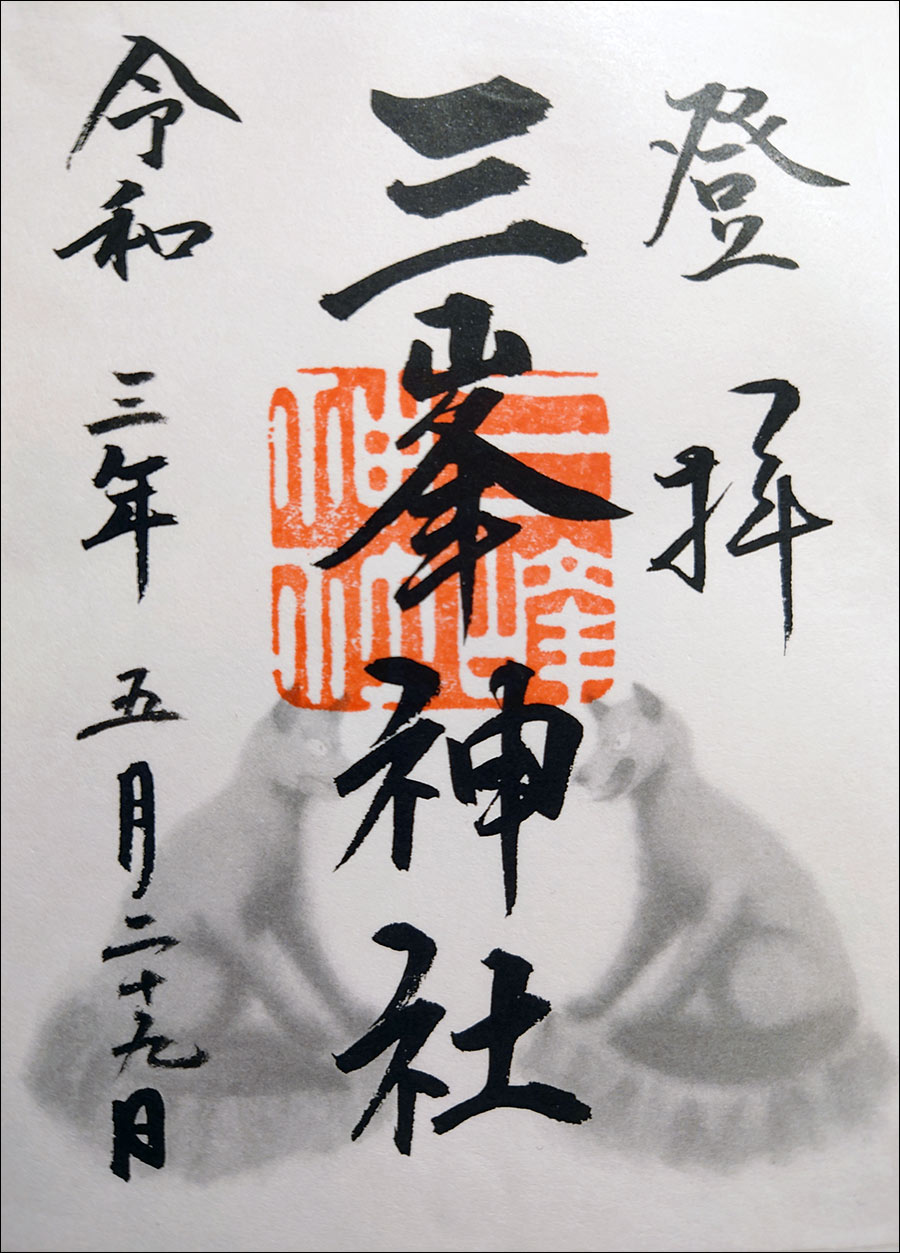
Congratulations for finishing this tour of Mitsumine Shrine. If you have made it this far, you deserve your daily bonus:
When you are going back home, up the stairs from the parking lot, make sure to check out the visitors’ center, a good way to spend your time waiting for your bus (or helicopter). The center is one big room, like a small museum, but with a ton of interesting exhibits on display, most of them representing the numerous species of animals that live in the mountains of Chichibu.

